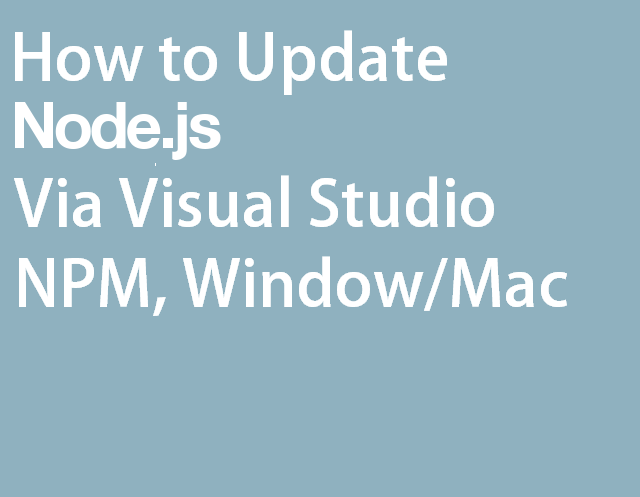In this section you will create three simple Node.js apps. One of them will just connect to the database, the second will perform basic Insert, Update, Delete, and Select, and the third one will make use of Sequelize, one of the most popular Node.js Object-relational mappers, to execute the same operations. Node.js® is a JavaScript runtime built on Chrome's V8 JavaScript engine. Latest LTS Version: 12.18.4 (includes npm 6.14.6) Download the Node.js source code or a pre-built installer for your platform, and start developing today.
Introduction
Node.js is an open source, cross platform, JavaScript runtime platform which enables JavaScript to be used for server-side scripting. Although .js is the extension to a JavaScript file but it doesn't represent any file of the framework. Radeon 9600 for mac. Now it has become foundational element of 'JavaScript everywhere' paradigm.
In this tutorial, we will learn the steps involved in the installation process of Node.js on MacOS.

Prerequisites
- MacOS
- Homebrew must be installed on the system.
Installation

This includes the following steps.
1) Update repository index of Homebrew package installer
Repository index of homebrew package installer needs to be updated first. It can be done with the help of following command:
2) Install Node.js
Guitar pro 6 torrent. After updating the repository index of homebrew package installer, we need to install Node.js using the following command:
This installs Node.js inside the Celllar directory of /usr/local/.
To verify that we have installed the desired version of Node.js, we can run the command node -v. It will show the version installed on our MacOS.
To run node.js on MacOS, just execute the node command. It will provide the development environment in which we can run the JavaScript code.
Well, we have successfully installed Node.js on MacOS.
Nodejs Org En Download

Node Js For Machine Learning
Node.js is required for using many JavaScript tools and for creating server-side JavaScript applications. Here is how you install Node.js on a Mac.
The first thing you should do is check to see if you have a version of Node.js already installed. To do that:
- Open the Terminal by pressing Command+Space to open Spotlight Search and entering
Terminalthen pressing Enter. - Enter
node - vin the Terminal and press Enter. - If you do have Node.js installed, it will output the version.
- Update to the latest version using
npm i -g npm. If you get a bunch ofcheckPermissionswarnings, you should run the command as the superuser like this:sudo npm i -g npm - You now have the latest version installed. You do not need to continue with these instructions.
- Update to the latest version using
- If you do not have Node.js installed, it will output something like
-bash: node: command not found. Continue with these instructions to install it. - Go to nodejs.org. You'll see download links for MacOS. If you are using Node.js for a Webucator class, you should select the LTS version. The Current version has the latest features, but may be more prone to changes and bugs than the LTS (Long Term Support) version.
- When the file finishes downloading, locate it in Finder and double-click on it.
- Go through the entire installation process.
- When installation is complete, open the Terminal by pressing Command+Space to open Spotlight Search and entering
Terminalthen pressing Enter. - Enter
node - vin the Terminal to verify that Node.js is installed correctly and to see the version of Node.js that was installed.
Nodejs Org En
If a version was output, then you're all set.